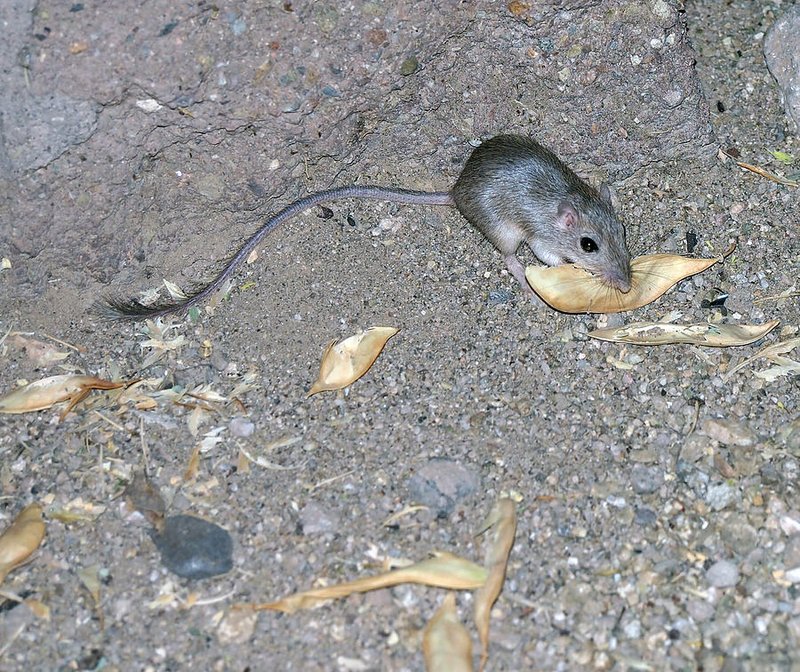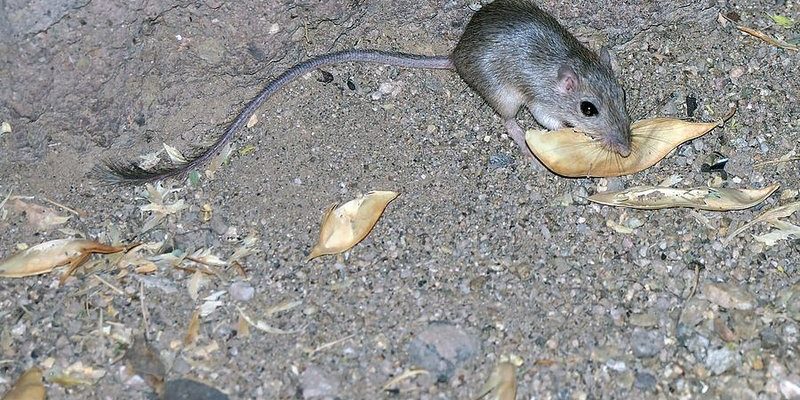
If you’ve ever wondered about one of nature’s most extraordinary survivors, look no further than the Kangaroo Rat. These small, nimble creatures are a fascinating blend of cute and tough, perfectly adapted to life in the arid deserts of North America. Imagine a tiny athletic champion, bounding across the sands with the grace of a gymnast while also holding the title of a master at conserving water in the most extreme environments. That’s the Kangaroo Rat for you!
Their name might evoke images of the famous kangaroo of Australia, and while they’re not related, they share some impressive traits. Kangaroo Rats are known for their powerful hind legs, which allow them to leap away from predators or obstacles with remarkable agility. It’s as if nature designed them specifically for life in the harsh desert, where every leap counts. But there’s so much more to these critters than just their hops.
In this article, we’ll explore the many facets of the Kangaroo Rat, from their habitat and diet to their unique adaptations that help them thrive in some of the driest places on Earth. So, grab a cup of coffee, and let’s hop right in!
Physical Characteristics
When you think of a Kangaroo Rat, the first thing that might come to mind is its legs. These small mammals are typically around 6 to 8 inches long from head to tail, with their tails making up over half of their length. But it’s not just their length that stands out; these creatures are also characterized by their strong hind legs, which can propel them to jump over three feet in a single bound! Imagine jumping over a fence with just a few hops!
Their fur is soft and typically a sandy or reddish-brown color, helping them blend in seamlessly with their desert surroundings. This color serves as excellent camouflage against potential predators like owls and snakes. Additionally, they have large, expressive eyes and long whiskers that contribute to their keen sense of sight and touch, making them well-equipped to navigate their environment under the cover of darkness.
Another interesting facet of their physical makeup is their cheek pouches. These pouches allow them to store food, like seeds and grains, which they can transport back to their burrows for later consumption. This adaptation not only helps them survive but also minimizes their trips outside their burrows, where danger lurks. It’s like having a mini grocery store packed into their cheeks!
Diet and Feeding Habits
The Kangaroo Rat is primarily a seed eater, favoring a diet rich in grains, seeds, and sometimes even roots. With their strong teeth, they can crack open tough seeds that other animals might struggle with. You might be surprised to learn that they are also nocturnal feeders, coming out under the cover of night when temperatures drop. This not only helps them avoid the scorching sun but also reduces the risk of dehydration.
Interestingly, Kangaroo Rats have developed an extraordinary ability to live without ever drinking water. Instead, they derive all the moisture they need from the seeds they consume. This means they can thrive in environments where water is scarce, which is quite impressive. Think about it—living in a desert and never needing to drink water! This adaptation is a game-changer for survival.
When it comes to storing food, these little guys are true survivalists. They’ll often stash away seeds in their burrows, creating a hoard that can last them through tough times. If a drought occurs or food becomes scarce, they can rely on these hidden treasures. It’s like having an emergency fund tucked away for a rainy day—but in this case, it’s for a dry day!
Habitat and Range
The Kangaroo Rat is primarily found in the southwestern United States and parts of Mexico. They thrive in arid environments, particularly in sandy, loose soils—think deserts, shrublands, and even grasslands. These environments provide the perfect conditions for their survival, as they can dig extensive burrow systems that protect them from both the heat of the day and predators.
These burrows serve as a sanctuary, providing not just shelter but also a cooler environment during the sweltering summer months. The ground temperature can be scorching, but just a few feet down in their burrows, the temperature can drop significantly. It’s like having your own air-conditioned home during a heatwave!
While they are well adapted to their environments, Kangaroo Rats are also sensitive to changes in their habitat. Urban development and agriculture can disrupt their living spaces. When their habitats shrink, it can lead to a decline in their populations, reminding us of the delicate balance of ecosystems. Conserving their environment is crucial for these unique creatures to continue thriving.
Behavioral Traits
Kangaroo Rats are social creatures, often living in small colonies. They communicate using a variety of sounds, which can range from soft chirps to loud calls. These vocalizations help maintain social bonds within their colonies and can alert others to potential dangers. Imagine a group of friends sharing secrets and keeping an eye out for each other during their nighttime adventures!
One of the most remarkable aspects of their behavior is their incredible jumping ability. They can leap up to 9 feet in one bound, which is nearly 10 times their body length! This agility comes in handy when escaping predators or even navigating the rugged terrain of their desert homes. You might say they’re the acrobats of the animal kingdom!
In terms of reproduction, Kangaroo Rats breed year-round, with females typically giving birth to two to five pups per litter. The young are born blind and helpless, relying on their mothers for warmth and food. As they grow, they’ll learn to hop and forage, quickly becoming independent. It’s a bit like watching a toddler learn to walk, only in the wild with much higher stakes!
Adaptations for Survival
The adaptations of the Kangaroo Rat are nothing short of astonishing. Perhaps their most significant trait is their ability to conserve water. As mentioned earlier, they can survive without direct water intake, relying solely on the moisture found in their food. Their kidneys are also incredibly efficient, extracting almost every drop of water from their diet, which is essential for survival in a desert environment.
Additionally, their nocturnal lifestyle is a critical adaptation. By being active at night, they avoid the harsh daytime temperatures that could lead to overheating and dehydration. Their large eyes help them see well in low light, allowing them to navigate their surroundings effectively. It’s as if they’ve mastered the art of living in a time and space where very few creatures can.
Furthermore, the structure of their burrows is an adaptation in itself. These complex networks not only provide shelter but also help regulate temperature and humidity. Each burrow system has multiple entrances and chambers, allowing the rats to escape quickly from predators if necessary. It’s like having a secret hideout, complete with several escape routes!
Conservation Status
While the Kangaroo Rat is a resilient species, not all populations are thriving. Habitat loss due to urban development, agriculture, and climate change poses significant threats to their survival. Some species of Kangaroo Rat are considered threatened or endangered. It’s a reminder of how interconnected our actions are with the health of local wildlife.
Conservation efforts are crucial to protect these unique creatures and their habitats. Organizations are working to create awareness and implement measures to preserve their environments. This can include habitat restoration projects and creating protected areas where Kangaroo Rats can live and breed without disturbance. Everyone plays a part, from individuals to larger organizations, in safeguarding these small but mighty mammals.
Ultimately, understanding the importance of the Kangaroo Rat and its role in the ecosystem helps motivate conservation efforts. They may be small, but their impact is significant, reminding us of the intricate web of life we’re all a part of. Protecting them is not just about preserving a species; it’s about maintaining the balance of our natural world.
Interesting Facts About the Kangaroo Rat
| Size: | 6 to 8 inches (15 to 20 cm) long |
| Habitat: | Deserts, shrublands, and grasslands |
| Diet: | Seeds, grains, and roots |
| Speed: | Can jump up to 9 feet (2.7 meters) |
| Lifespan: | 2 to 5 years in the wild |
| Water Requirement: | Can survive without drinking water |
FAQ
What is the size of a Kangaroo Rat?
Kangaroo Rats typically range from 6 to 8 inches long, including their tail, which can be as long as their body. They are small, compact animals that have developed strong hind legs for jumping.
Where do Kangaroo Rats live?
These fascinating creatures are primarily found in the arid regions of the southwestern United States and parts of Mexico. They prefer sandy soils, where they can easily dig extensive burrows to escape the desert heat and predators.
How do Kangaroo Rats survive without water?
Kangaroo Rats have incredibly efficient kidneys that extract moisture from the seeds they eat. This allows them to survive without drinking water directly, making them adept at living in extremely dry environments.
What do Kangaroo Rats eat?
Their diet consists mainly of seeds and grains, which they gather and store in cheek pouches. They are nocturnal feeders, usually foraging at night when it’s cooler, helping them conserve energy and avoid overheating.
Are Kangaroo Rats social animals?
Yes, Kangaroo Rats often live in small colonies. They communicate with each other through various sounds and signals, helping to alert one another of potential dangers while they forage and play.
How fast can a Kangaroo Rat leap?
Kangaroo Rats can jump up to 9 feet in a single bound. This incredible agility helps them escape predators and navigate their challenging desert environment with ease.
Why are Kangaroo Rats important to their ecosystem?
Kangaroo Rats play a vital role in seed dispersal and help aerate the soil through their burrowing activities. By doing this, they contribute to the health of their ecosystem, promoting plant growth and maintaining habitat stability.
What challenges do Kangaroo Rats face?
They face significant threats from habitat loss due to urban development, agriculture, and climate change. Some populations are at risk, making conservation efforts essential for their survival.
How long do Kangaroo Rats live?
In the wild, Kangaroo Rats typically have a lifespan of about 2 to 5 years, although some individuals may live longer depending on various factors, including environmental conditions and predation risks.
Can Kangaroo Rats be kept as pets?
While they are fascinating creatures, Kangaroo Rats are wild animals with specific needs that are challenging to meet in a domestic setting. It is generally not advisable to keep them as pets, as they are best appreciated in their natural habitats.

